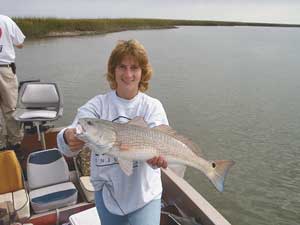
Often anglers can feel as if we’re “fishing in a bathtub.”
It’s so common to feel like the fish are nowhere to be found, and a bathtub would be just as good a place to be soaking bait. The obvious reason is fish can’t be caught where they’re not. Even proven techniques used by a professional will fall short if used at the wrong places. If you’re fishing in waters currently void of fish, even electro-fishing gear will leave coolers empty at the end of the day. Finding the hideouts where target species actually live during winter will increase your odds of catching fish.
Discovering these locations is the mystery. But a little homework and experience should pay off.
The secret? To catch winter fish, the right baits or lures must be presented at the right times right in front of a fish’s face.
Many anglers follow the crowds in hopes of discovering somebody else’s good location. In many instances, these areas will be good places to start, but the blind will often be leading the blind.
Working to discover your own hot spots will be ultimately more productive — and rewarding.
Landing that big stringer of fish will depend upon many factors, including angling technique, time of year, bait choice, presentation and location. At the end of the day, location is by far the most important factor. Even Bill Dance can’t land 10-pound bass if he isn’t fishing at locations where 10-pound bass don’t live (why do you think most of his TV shows occur at Florida’s private phosphate pits?).
Finding fish-infested locations takes a lot of time on the water. Then, learning the patterns of fish at a particular region over time will pinpoint optimum locations. Luckily for observant anglers, fish are creatures of habit and will frequent the same areas repeatedly, as long as, conditions are similar.
Saltwater fish seasonally migrate to specific habitats during different times of the year to take advantage of available forage in close proximity to cover or deep hideouts.
The location is never random though. Fish choose an area based on their life history needs that are generally related to water temperature, salinity, water clarity, structure and water depth. However, fish are not exactly “rocket scientists.” They move from one good feeding zone to the next closest one. The best locations are usually along their migration routes or in close proximity to their previous hangouts.
Fish predators will feed throughout the day during many conditions, but specific durations throughout the day allow them to gain advantage over their prey. Tidal and wind currents create micro-habitat conditions throughout the day and make easy feeding opportunities for predators.
For instance, during the falling tide, the currents carry forage fish and crustaceans out of the protection of the shallow marshes into the deeper channels. Predator fish will gang up at these rips and eddies in a feeding frenzy, gulping abundant forage. However, the marine environment is ever changing. So good feeding conditions wax and wan, which means predators will lose and gain their edge — which also means they move in and out of such areas.
When fish find locations that have all of the necessary components, they usually stay within the vicinity and seek out different vantage points to ambush prey species.
Knowing a little about fish needs helps anglers understand where to try to ambush them. Basically, sportfish feed to replenish their energy reserves, so they don’t want to waste a lot of energy traveling great distances on a daily basis to feed. As conditions change throughout the day, fish won’t move far. As the currents change, they might just reposition near baitfish-holding structure or may move a little shallower or deeper.
Experimenting with new techniques and tackle in your already-discovered good fishing locations may prolong success during the previous slow periods.
Fishing, with few exceptions, is almost entirely trial and error. Experienced anglers can increase their odds of success by spending hours on the water and finding the best locations that contain the most numbers of fish.
Fishing patterns eventually develop for almost any situation if the angler invests enough time in the area to discover them. After the patterns reveal themselves, many new good fishing locations with similar characteristics will become apparent, providing alternative locations to fish.
Fishing can be a complex puzzle to solve, but finding the prime locations actively holding fish will improve your success on the water.




Be the first to comment